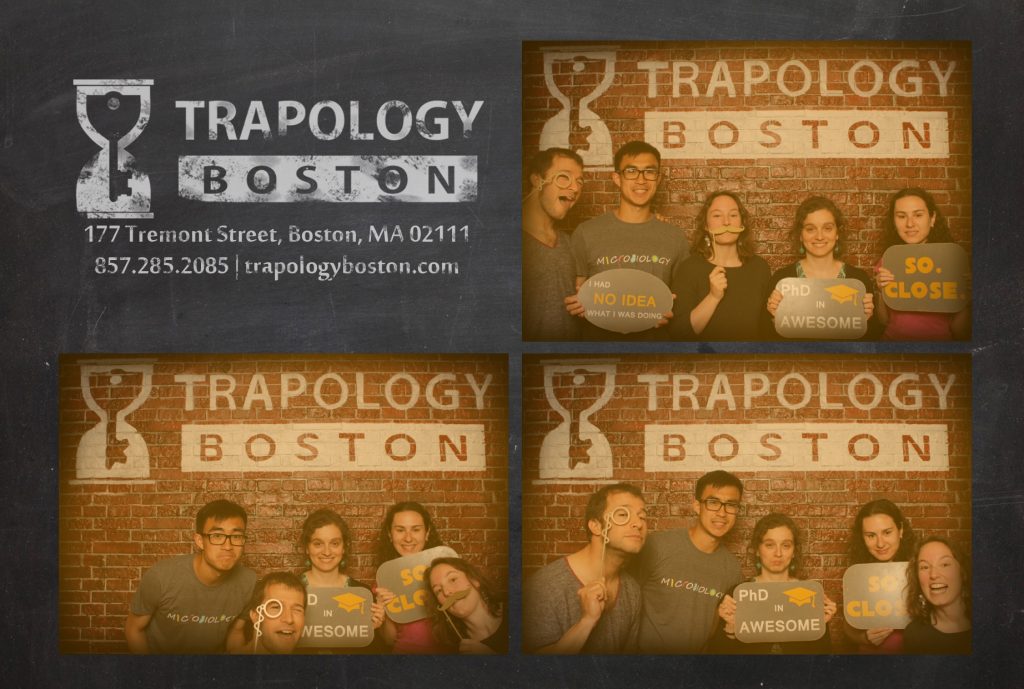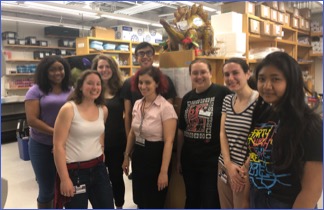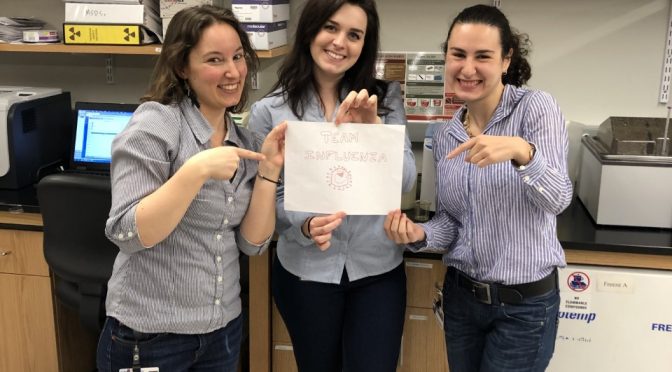Humans of Tufts Boston, 22 October 2019
Léa Gaucherand, Microbiology, Third-year Ph.D. Student: “I Fell in Love with Research”

JH: Thank you so much for taking the time to do this! To begin with, where did you grow up?
LG:I grew up in the North East of France, in a city called Nancy in the Lorraine region. There are many differences between life in France and here; university is very cheap, like 100 – 200 euros [110 – 220 USD] a year. Also, the Ph.D. system is different because it’s only 3 years (you do it after your Master’s). You don’t have rotations, you just apply to one project in one lab and for funding from the government or other agencies.
JH: What were you doing before graduate school?
LG: I actually have a Master’s degree in Health and Drug Engineering and a multidisciplinary Engineering degree (equivalent to a Master’s but it is a weird concept that only exists in France where you do a little bit of everything). As part of my studies I did an internship in bioengineering research at the Infectious Disease Research Institute in Seattle and I fell in love with research (and with someone in Seattle). I went back to Seattle after graduating and started as a volunteer in Dr. Tom Wight’s lab at the Benaroya Research Institute. I then got a technician position in the same institute in Dr. Adam Lacy-Hulbert’s lab, and after two years there I moved to Boston for grad school!
JH: When you first moved to Seattle, did you encounter any culture shock?
LG: I had actually already lived in San Francisco for 6 months for another internship one year before I moved to Seattle, and I had a pen pal from Pennsylvania that I visited for a week in high school. I don’t think I really had any culture shock, it was more the excitement of being somewhere new and fully independent.
JH: How did you first become interested in pursuing science as a career? Was there anything in particular that steered you towards microbiology?
LG: My interest actually came pretty late. I was always good at maths and just liked thinking about science in general, but I had no idea whatsoever what I wanted to do. That’s why I went to the French engineering school I mentioned earlier, to still have a broad science background without deciding yet what I wanted to do. It was only there that I realized I missed learning about chemistry, and the only class I really enjoyed was about human physiology and bioengineering. I took extra classes during my last year to have a more specialized degree, and did the internship [in Seattle] that really opened my eyes about what research was and how much I enjoyed it. It’s only once I was a technician that I worked on viruses. I thought they were the coolest thing so I wanted to learn more about them, and about how they interact and evolve with the host. I applied to a bunch of programs, most of them more virology-focused than Tufts, but I really enjoyed my interview at Tufts Micro. It just felt right.

JH: What do you like to do outside of lab?
LG: Outside the lab I like to play volleyball (we have a great team at Tufts Micro!). I say it’s a Micro volleyball team but it’s not official at all. Another Micro student, Allison (in the Camilli lab), has a net so we go play with a few people from Micro (and other programs) at the Boston Common in the summer. Everyone is welcome and it would actually be great if we had more players! I also like to watch intellectual movies and travel. My husband showed me two intellectual movies in the past few weeks that I really enjoyed: Burning by director Chang-dong Lee and Shoplifters by director Hirokazu Koreeda. Unfortunately, I don’t have time to travel that much (apart from going back to France twice a year). The last big trip I took was right before moving to Boston, to Panama and Hawaii.








